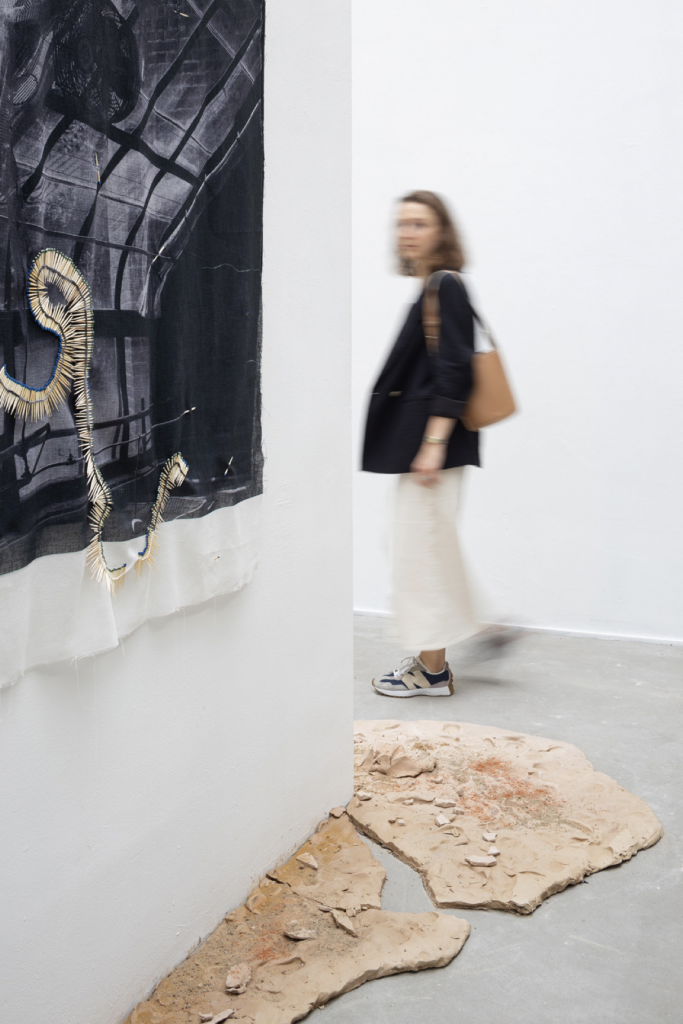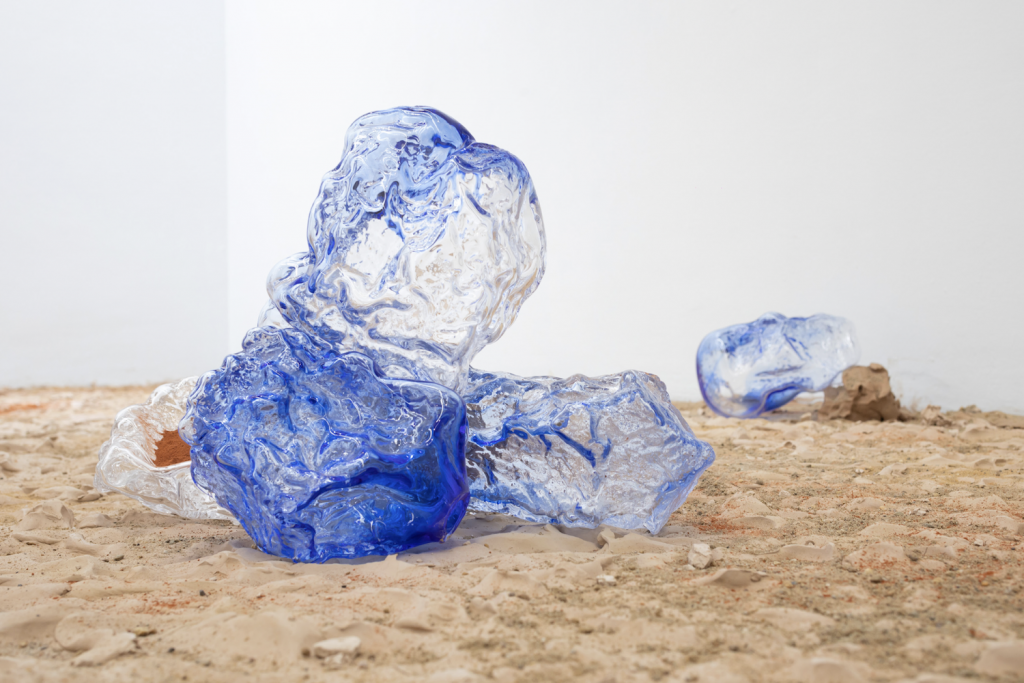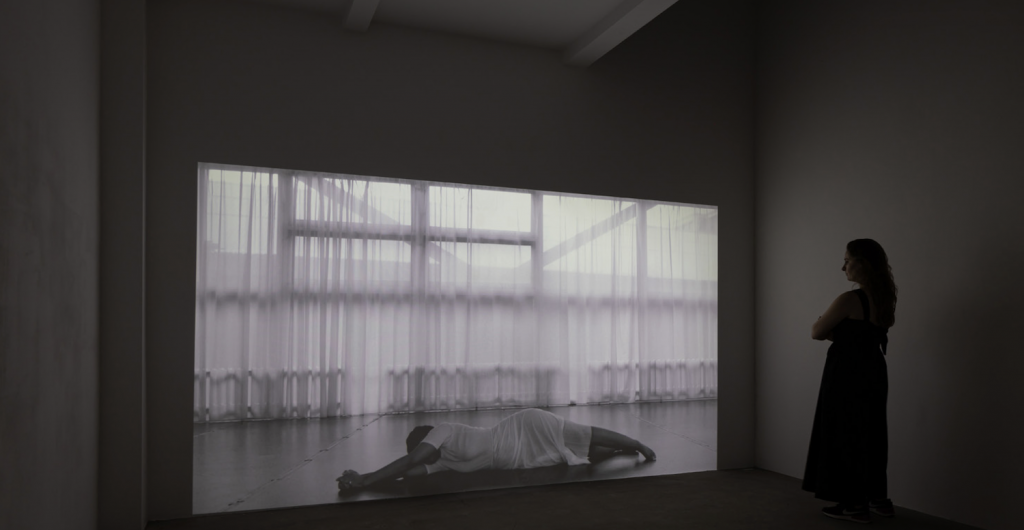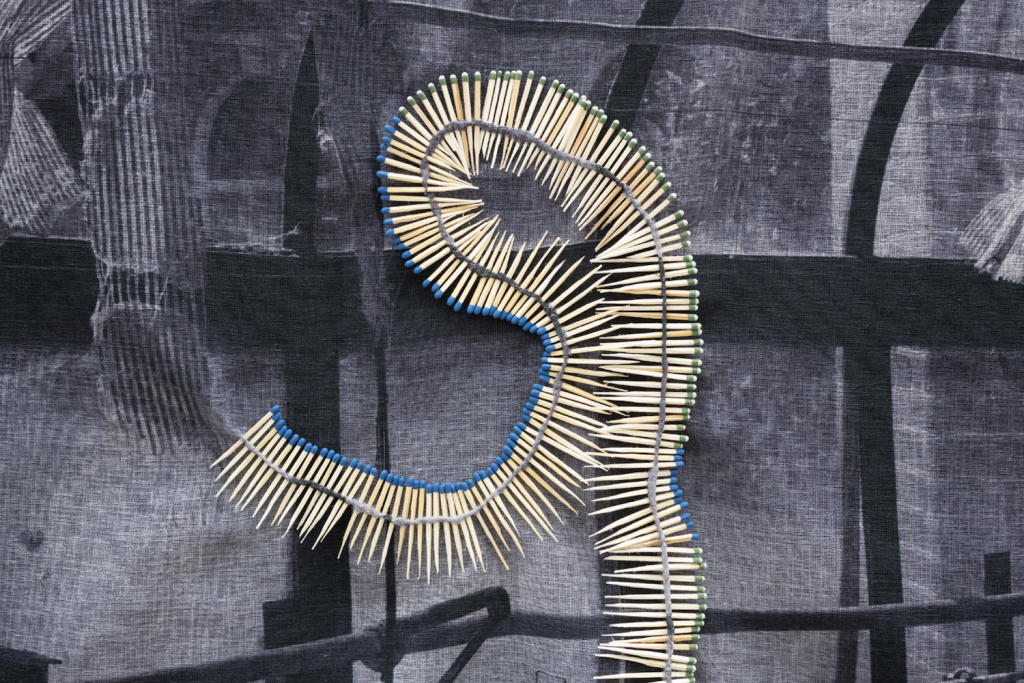Lungiswa Gqunta: Dreams as Gates of Knowledge

AKINCI will present work by Lungiswa Gqunta at Art Rotterdam. In her practice, the South African artist explores the elusive world of dreams. She sees these dreams as a place where important knowledge can be gained that is overlooked or excluded in other places. Her work was recently on display at the Liverpool Biennial, at the Fondazione Sandretto Re Rebaudengo in Turin and at the Centraal Museum in Utrecht and earlier this year, she was invited to submit a proposal for the famous High Line in New York.
In her multidisciplinary practice, which includes performance, installation, sculpture and printmaking, she draws attention to the complex and ongoing ways in which colonialism and patriarchy shape South Africa's contemporary political, cultural and social landscape — and continues to create systematic inequality until this day. She highlights, among other things, African systems of knowledge and belief that were structurally excluded during the apartheid regime.

In her most recent work, Gqunta explores the concept of sleep and dreams on the basis of her Xhosa heritage. Dreams function as a connection with her ancestors and are a place where knowledge can be gained. Her multi-sensory and layered work is informed by this dream world and explores themes such as landscape, violence, resistance, collective healing, identity, female power, the domestic space, traditions and rituals, history and collective memory, privilege, globalisation and capitalism. Recurring materials in her work are materials that could also serve as a weapon in a different context or form, such as glass, concrete, barbed wire and more specifically: the more aggressive razor wire. They are symbolic and emotionally charged materials that refer to the townships, which were reserved for the black inhabitants of South Africa during apartheid. Gqunta also regularly uses white sheets in her works, which refer to a recognisable ritual: the processing of the laundry and the folding of the sheets, traditionally a moment when knowledge was shared between the female members of her family, but at the same time a potential moment for secret talks and resistance during apartheid.

Her recent solo exhibition 'Sleep in Witness’, that was on display at AKINCI this autumn, was previously presented in a different form at the Henry Moore Institute in Leeds. In both exhibitions, part of the floor was covered with cracked clay and sand, carefully shaped by the artist's feet. As a viewer, you were forced to walk over it in order to enter the exhibition, which made the instability under your feet tangible. In combination with blue structures of transparent, hand-blown glass — reminiscent of rocks or water — they formed the site-specific installation "Zinodaka". The video work "Rolling Mountains Dream" in the exhibition referred to remembering and learning from dreams. And the works "Instigation in Waiting I & II" referred to the ways in which colonial oppressors introduced new plant species and removed existing ones as a way of controlling the environment, a tradition that lives on in a different form in conservatories and botanic gardens.

Her room-filling installation "Ntabamanzi", which consists of wave-like barbed wire wrapped in bright blue fabric, was on show in the Centraal Museum this summer. The large-scale work refers to the reclaiming of healing water rituals that were prohobited during the apartheid regime, but it also challenges the viewer to think about freedom of movement in a space — and how that is not as self-evident for everyone. The name is a combination of two Xhosa words: ntaba (mountain) and manzi (water) and the installation was born in a dream of the artist. Gqunta then worked for months on the execution of the work, after which only the sharp parts still portrude.
Gqunta isn't afraid to ruffle some feathers and creates installations that cause discomfort and confrontation in white viewers, while other works offer care of the mental health of black viewers. She feels that it's important to have certain conversations, no matter how uncomfortable they may be. In a video for the Henry Moore Institute, she states: “I think of it as like trapping someone into a conversation. No one’s gonna go willingly to a place that is difficult, that is hard, and so you gotta reel them in. The aim is for the work to follow people home somehow. To haunt them. [Some of my other] installations are I guess the complete opposite, where it’s about rest and recharging.”

Gqunta studied sculpture at Nelson Mandela Metropolitan University in Port Elizabeth, followed by a master's degree at the Michaelis School of Fine Arts in Cape Town. She completed residencies at the prestigious Rijksakademie van Beeldende Kunsten in Amsterdam, Gasworks in London and Dumbarton Oaks in Washington DC, a research institute, library and museum affiliated with Harvard University. She currently lives and works in Cape Town. Her work has been shown in the Palais de Tokyo in Paris, during Manifesta 12 and the Istanbul Biennale and has been included in the collections of institutions such as KADIST in Paris, the Kunsthaus Museum in Zurich, the Centraal Museum in Utrecht and Zeitz MOCAA - Cape Town Museum of Contemporary Art.
Written by Flor Linckens


